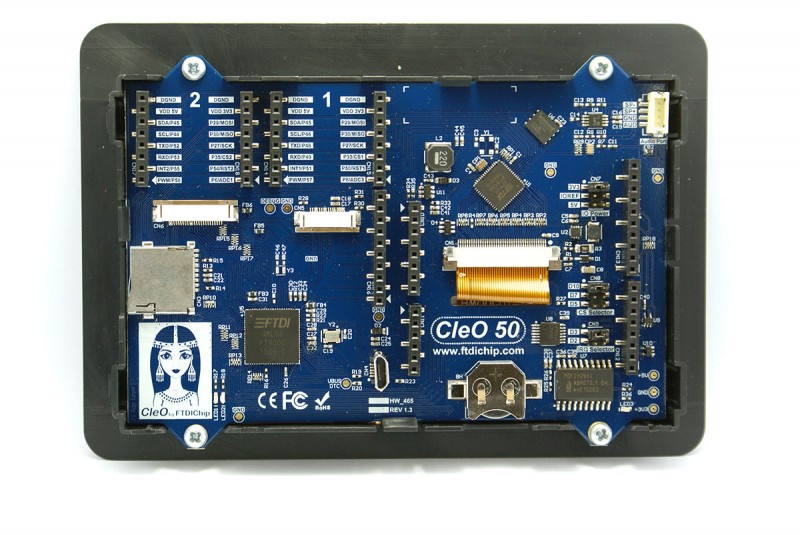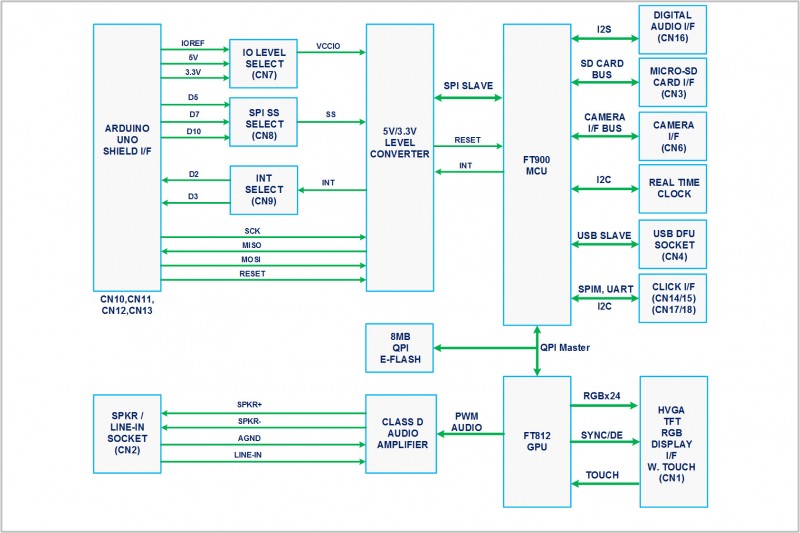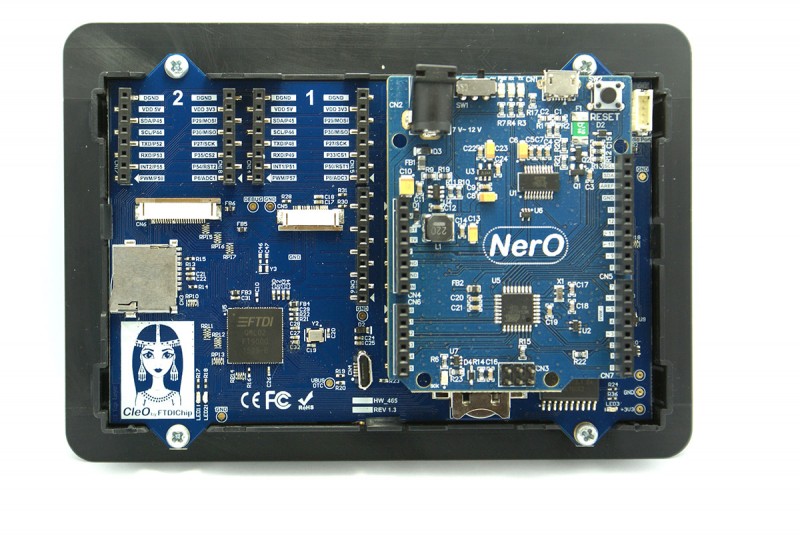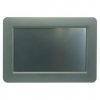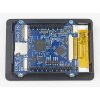CleO50 also provides two mikroBUS™ interfaces, via which a vast array of different ‘click boards’ from MikroElektronika can be connected to CleO and thereby add extra functionality as required. CleO50 is based on Bridgetek’s FT812 - Advanced Embedded Video Engine (EVE2) and FT900-low power, performance-optimized 32-bit microcontroller.
FT812 controls display and senses 4-wire resistive touch panel. Touch screen HW engine can recognize touch tags and track touch movements.
To simplify the HMI design, FT812 provides drawing of widgets buttons, clocks, keys, gauges, text displays, progress bars, sliders, toggle switches, dials, gradients, etc. and animated functionalities such as displaying logo, calibration, spinner, screen saver and sketch. It supports mirroring and rotating of display and adjusting touch screen transformation matrix on the fly (CMD_SETROTATE), bitmap rotating, scaling and translating. FT812 can play video in AVI container (MJPEG (Motion Encoded JPEG) with audio data encoded as 4 Bit IMA ADPCM, 8 Bit signed PCM, 8 Bit u-Law audio.
Built-in sound synthesizer generates notification sounds, which are played through PWM audio output. FT812 can also play audio recorded in RAM.
FT900 takes care of data to be displayed. It processes data from SPI slave interface which is pin configurable to support both 5V and 3,3V voltage levels. Typical source of data is NerO or other Arduino UNO compatible board. FT900 can also process data from microSD/SDHC memory card, camera or onboard 8MB Q-SPI Flash and send them to FT810 through Q-SPI interface.
CleO50 and CleO35 shares the same set of accessories: CleO-Camera, CleO-Speaker, CleO-RIO (connector board for attaching to Arduino) and NerO of course.
CleO50 is promoted as Arduino shield but it can also be used as a standalone product without Arduino compatible board. CN10 connector contains one-wire debug/program interface (DEBUG, RESET and GND), which is compatible with UMFTPD2A programmer/debugger but custom cable is required and CleO50 CN7 jumper has to be set to position 1-2 (VDD_SEL=VDD_3V3). Development tools for FT900 can be freely downloaded from FTDI or Bridgetek.
For more information, please see CleO documentation. For further information about Bridgetek products, please look at our Bridgetek’s web pages or contact us at info@soselectronic.com.
- Complete access to a comprehensive development resource, which has step-by-step tutorials and projects, plus a series of software tools.
- Dedicated site with support forum www.CleOstuff.com
- Almost everyone, even without prior knowledge of complex programming graphics and mathematics can program a professional looking HMI / GUI Smooth animation of graphical content, even at 60fps frame rates.
- Landscape and portrait modes supported.
- Anti-Aliased graphics for much finer image quality with no artifacts in raster images, objects are rendered with 1/16th of a pixel resolution.
- File system supports up to 8 simultaneous file operations.
- Fast direct file transfers between micro-SD/Q-SPI Flash and the Graphics subsystem without using Arduino UNO resources.
- Module with panel mountable bezel ready for embedding.
- Two MikroBUS interfaces
- 10/100Mbit/s Ethernet interface
- RTC with battery backup
- Micro SD/SDHC memory card socket support.
- Built-in 8MByte Q-SPI Flash memory.
- One-wire debug/program interface.
- USB DFU (Device Firmware Upgrade) port for firmware updates.
- Serial Camera Control Bus (SCCB) interface.
- Built-in 1,25W/8Ohm speaker amplifier
- Designed as Arduino compatible shield.
- CE and FCC certified.
Do you like our articles? Do not miss any of them! You do not have to worry about anything, we will arrange delivery to you.

